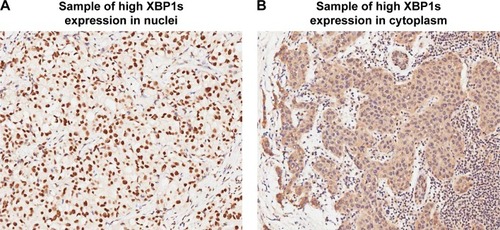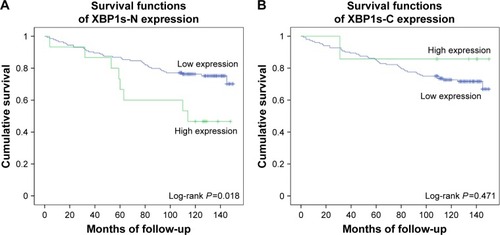Figures & data
Table 1 Patient characteristics
Figure 1 Immunohistochemical staining data.

Figure 2 Kaplan–Meier survival analysis categorized by clinical stage.

Figure 3 Survival curves of (A) nuclear XBP1s (XBP1s-N) expression and (B) cytoplasmic XBP1s (XBP1s-C) expression.

Table 2 Kaplan–Meier survival analysis and log-rank test
Table 3 Correlation of nuclear XBP1s expression with various clinicopathological parameters
Table 4 Multivariate Cox regression analysis
